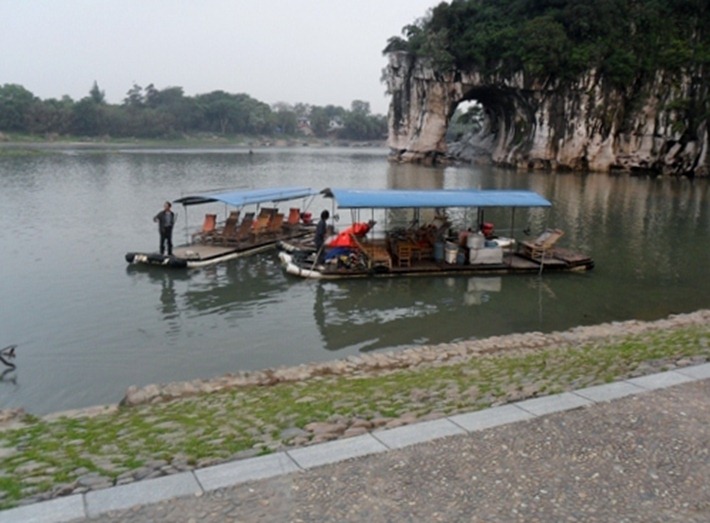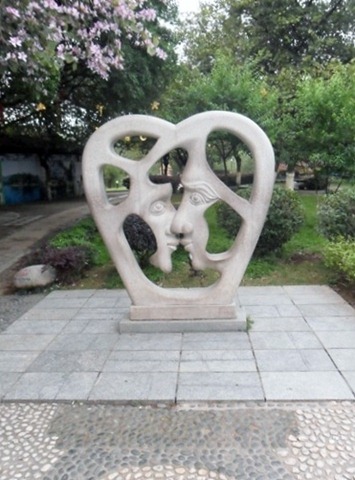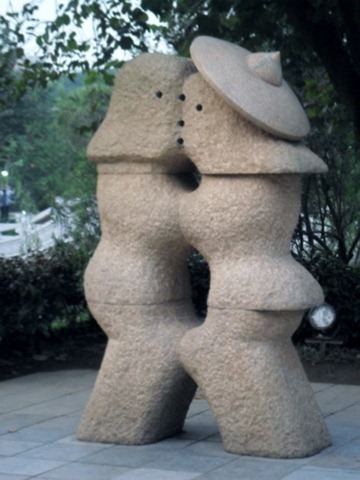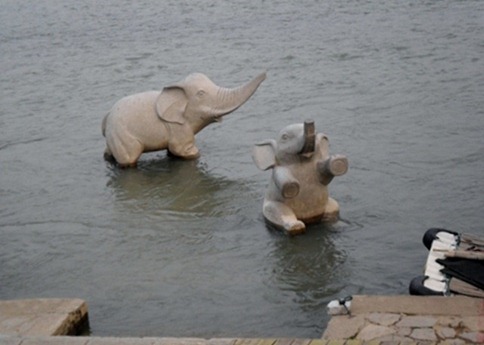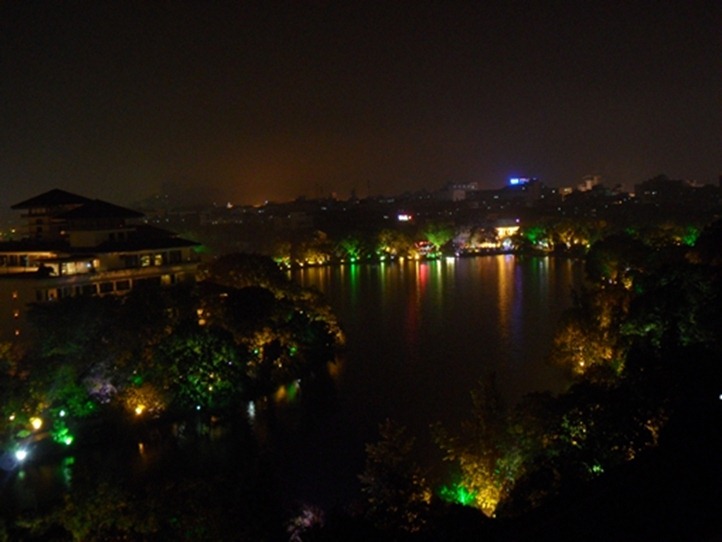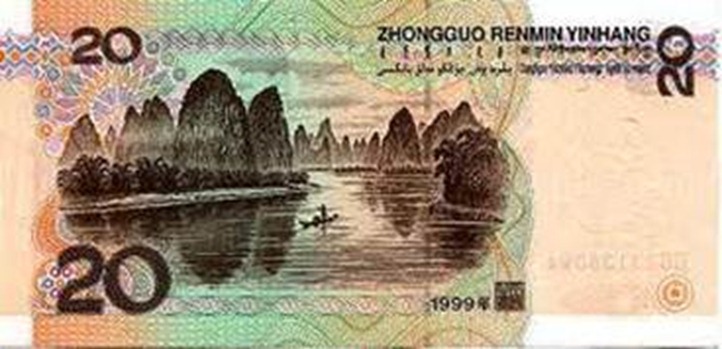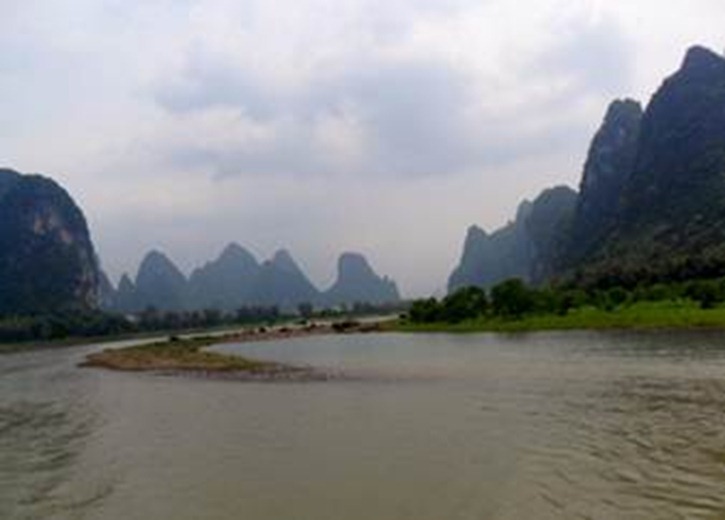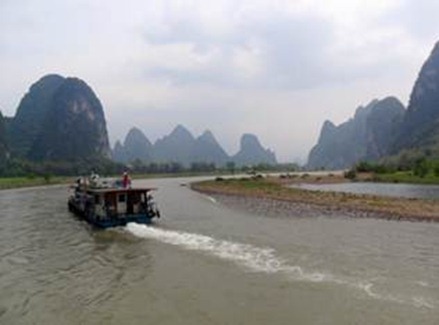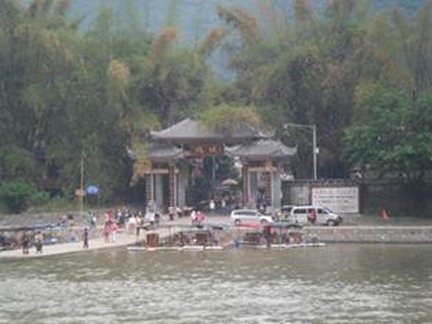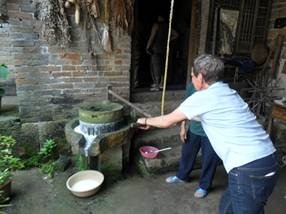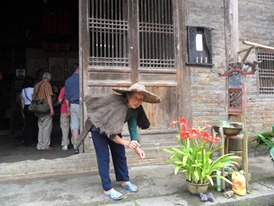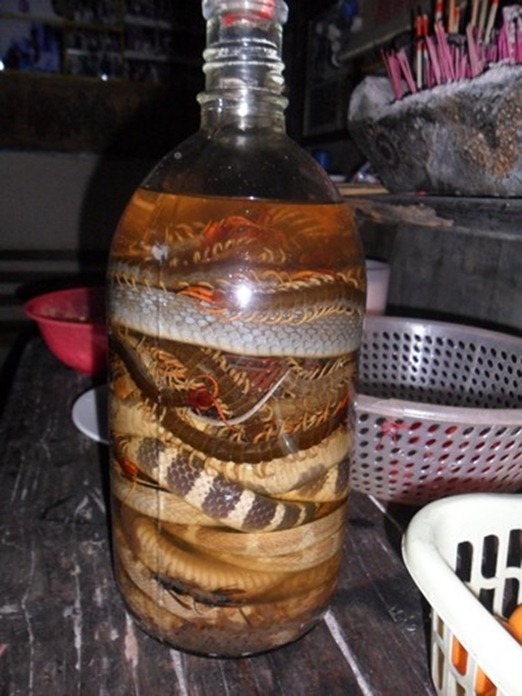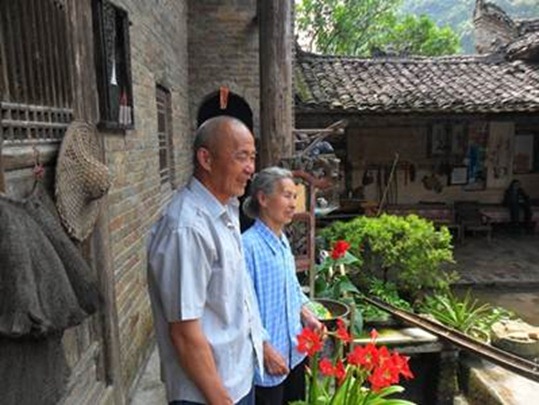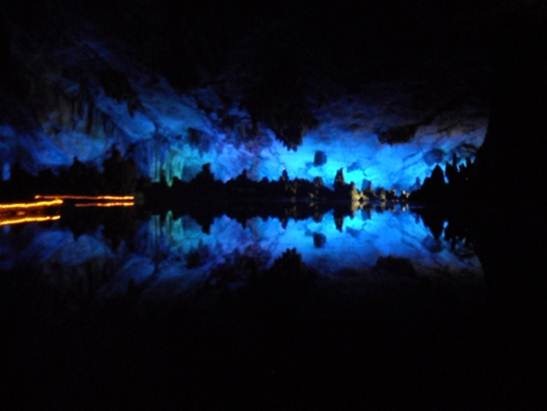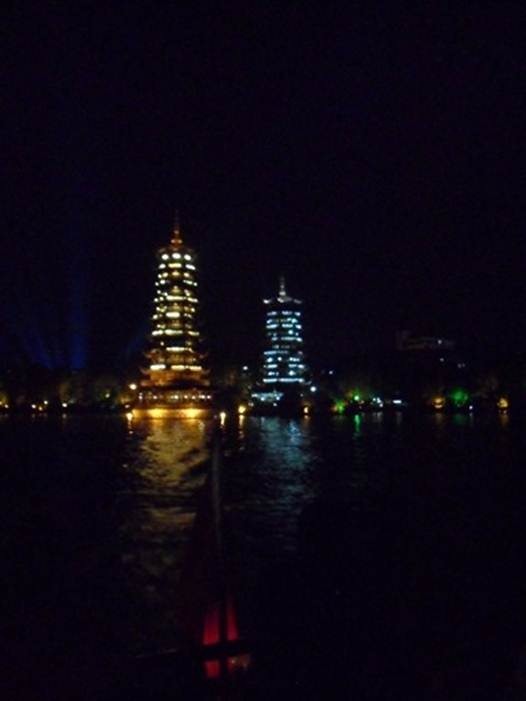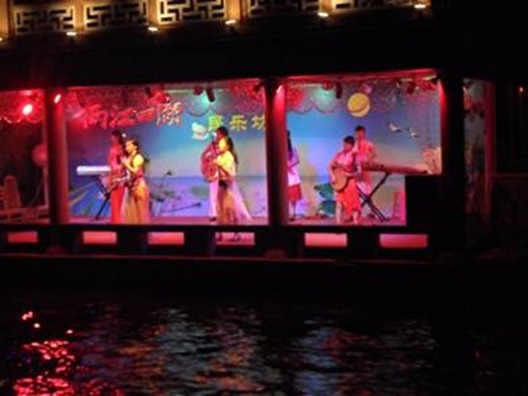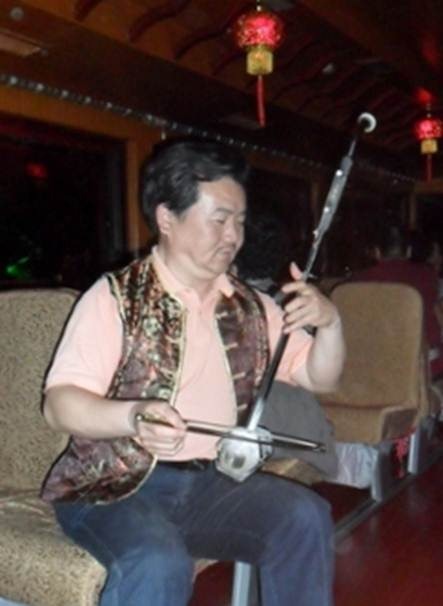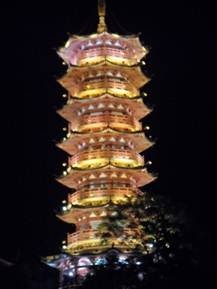China 3 - Guilin

|
Next stop on our speedy tour was Guilin… less history and more nature. The river Li runs through a limestone region with pinnacles similar to those of Phang Nga Bay in Thailand …but towering alongside the river rather than soaring out of the sea. The Chinese have a fertile imagination and manage to see shapes in the rocks that are not immediately obvious. After our delayed flight we had only a short time to see the Elephant Drinking Rock… well maybe.
As ever in China there were attractive gardens with more modern sculpture than we have been seeing recently, impressive and fun nonetheless.
Just as in Beijing the paths are an important part of the overall landscape design and were paved in various materials from pebbles to stone slabs, crazy paving and concrete stretches imprinted with leaves.
Our super hotel overlooking the river with this twinkling night view.
The river is the main attraction here and the following day we were taken to a wharf where there was a flotilla of riverboats taking (as usual) Chinese tourists downstream past various landmarks including the scene that appears on the 20 Yuan note!
Lunch was a floating affair cooked on board by chefs in their open air kitchen.
River fishing.
The trip ended at the small river side town of Yangshuo, thronged with tourists as ever, but we were then given the option of cycling to a farm in the nearby countryside. I opted for this mode of transport but was unsure it was the best idea when I realised we had to negotiate some major road junctions. The Chinese use their vehicles, their bikes or themselves as statements of road ownership. For instance to cross a road the approved manner is to simply walk out and assume the cars will slow down… this makes it very scary to cross busy dual carriageways. Even where there are pedestrian crossings with lights, traffic will still turn right… as the lights do not apply to them. In any case there seems to be a general consensus that traffic lights only apply to cars, buses and lorries… and not always them.
Interestingly in the big cities nearly all motorbikes are electric promoted by the government to reduce pollution. Some riders wear helmets but they are not required as electric scooters and motorbikes are classified as bicycles. The farm we visited retained a lot of original features, including some of the old farm equipment such as this soya bean mill and this rice straw cape worn in wet weather.
Granny, wearing the rice straw cape, demonstrates the back breaking task of planting rice seedlings. We decided not to sample the local country cure for arthritis!
The farmer and his wife were very friendly and happy to be asked about Mao’s time. The farmer said he had been a communist party leader of the local village and had not been too badly affected although we did not find out if his land was taken into communal ownership. He did say that Mao had destroyed a lot of good things such as temples and books. We got the impression, as elsewhere, that people felt that Mao was the start of a lot that was right about the country, giving it strong unity and that it was a stage that the country had to go through to get to where it is today. Certainly the crowds in Tiannamen Square prove that he is still held in affection by a lot of older people, many of who must have suffered during his rule.
Bidding goodbye to the farmer and his wife there was another scary bike ride and a bumpy bus ride to visit the vast and impressive Reed Flute limestone show caves close to Guilin with clever lighting to enhance the natural features and reflections in the pools.
In the evening we took another short cruise in the centre of Guilin. The river banks were lit by coloured lights in the trees and on the banks there were a number of musicians and dancers performing for our benefit. We were also shown how the cormorant fishermen use their birds to catch fish.
Sadly we do not have photos of the cormorant fishing but it all looks too easy. Lights are used to lure the fish to the side of the punts, the cormorants are dropped in the water and they come up with a fish immediately that the fisherman then massages back out from the bird’s gullet. A string around the neck ensures the bird cannot eat the fish. A lot easier than hanging a worm on a hook! On the way back from this we were played to by a man with a 2 string bowed instrument an “ erhu” from the North of China. He gave us a selection of traditional Chinese tunes, country and western numbers and even Auld Lang Syne!
Next morning it was off to the airport for a flight to Shanghai. Guilin is very attractive, lively and colourful, we wanted more and said we would come back but there is so much to see of China so that would be a difficult decision.
. |
